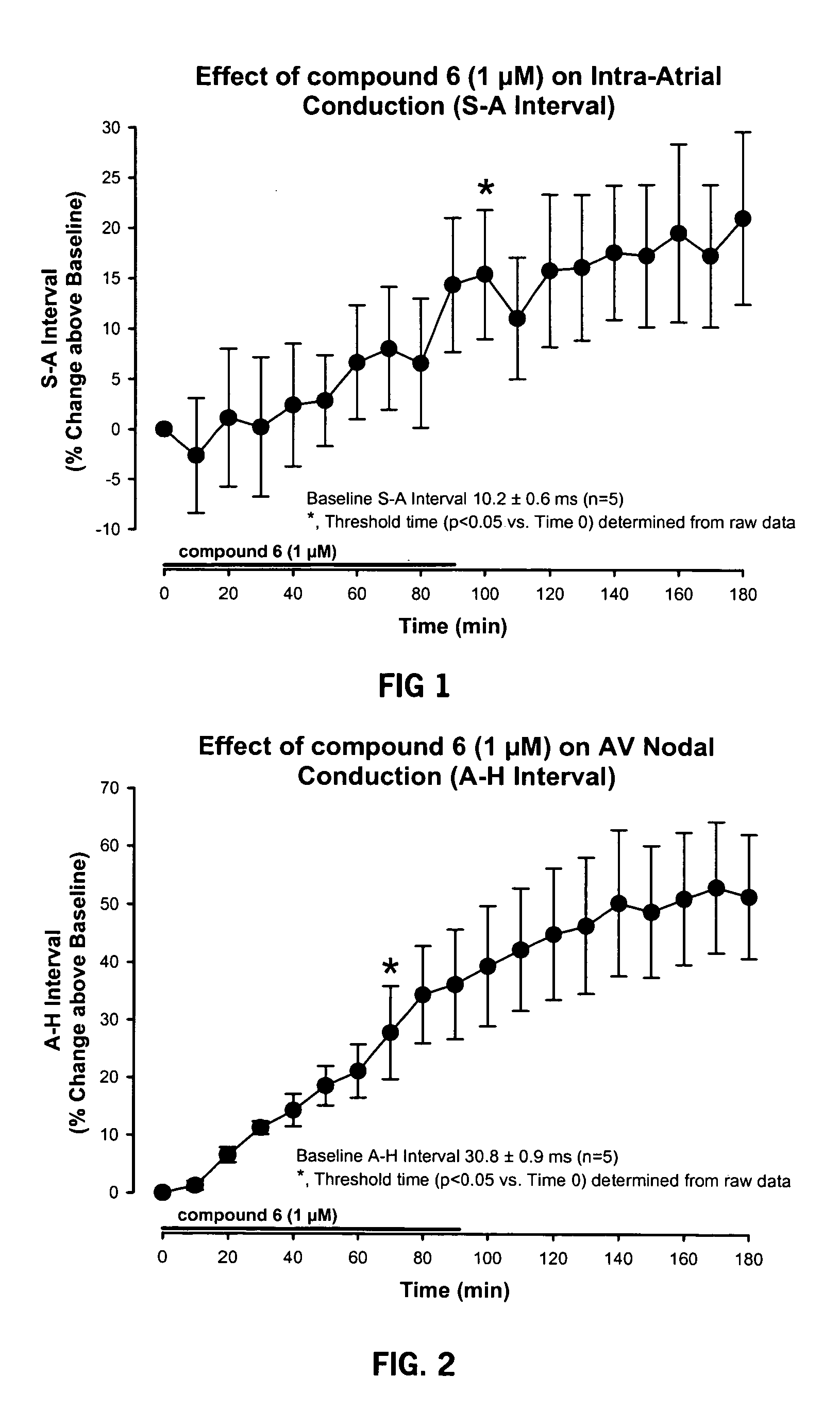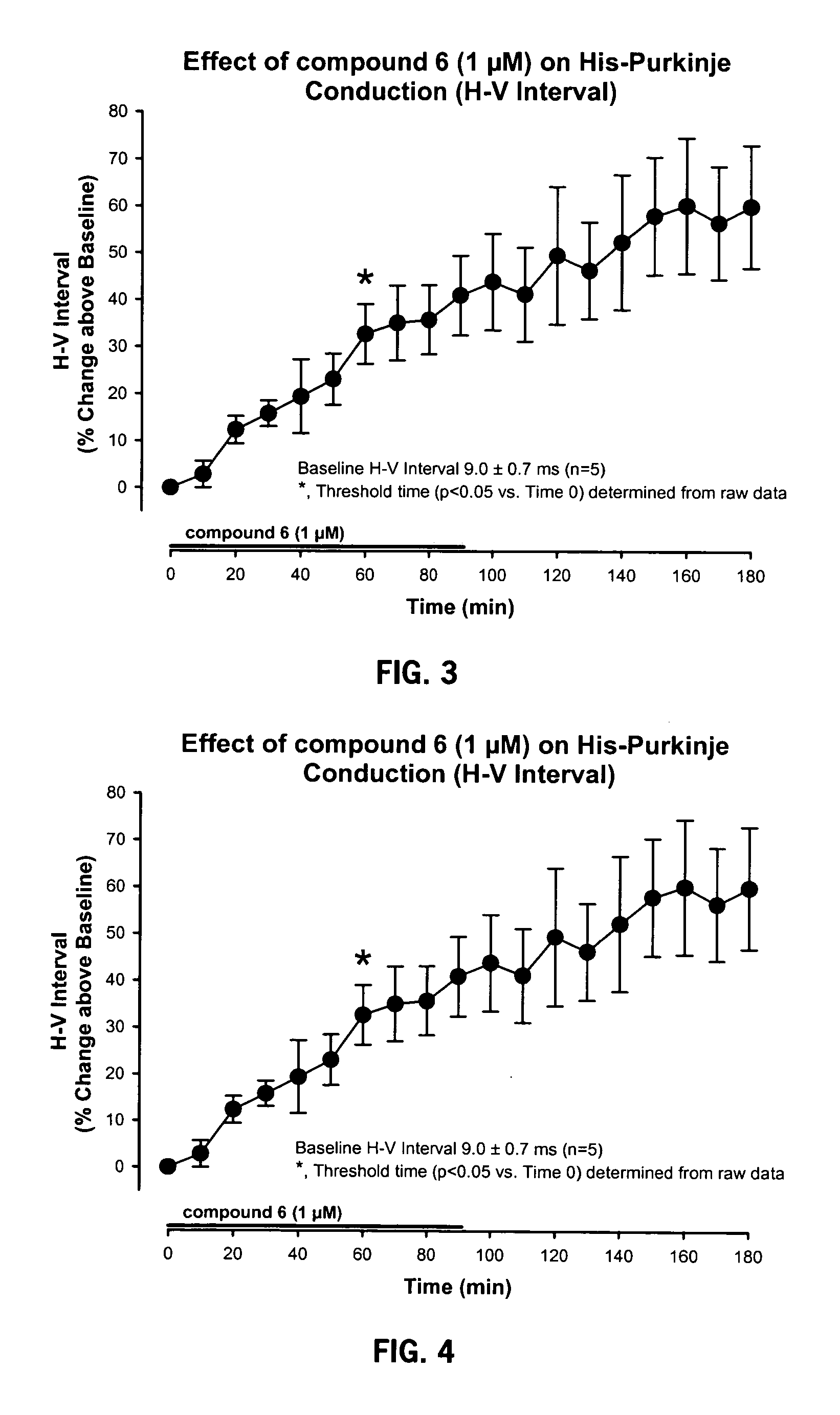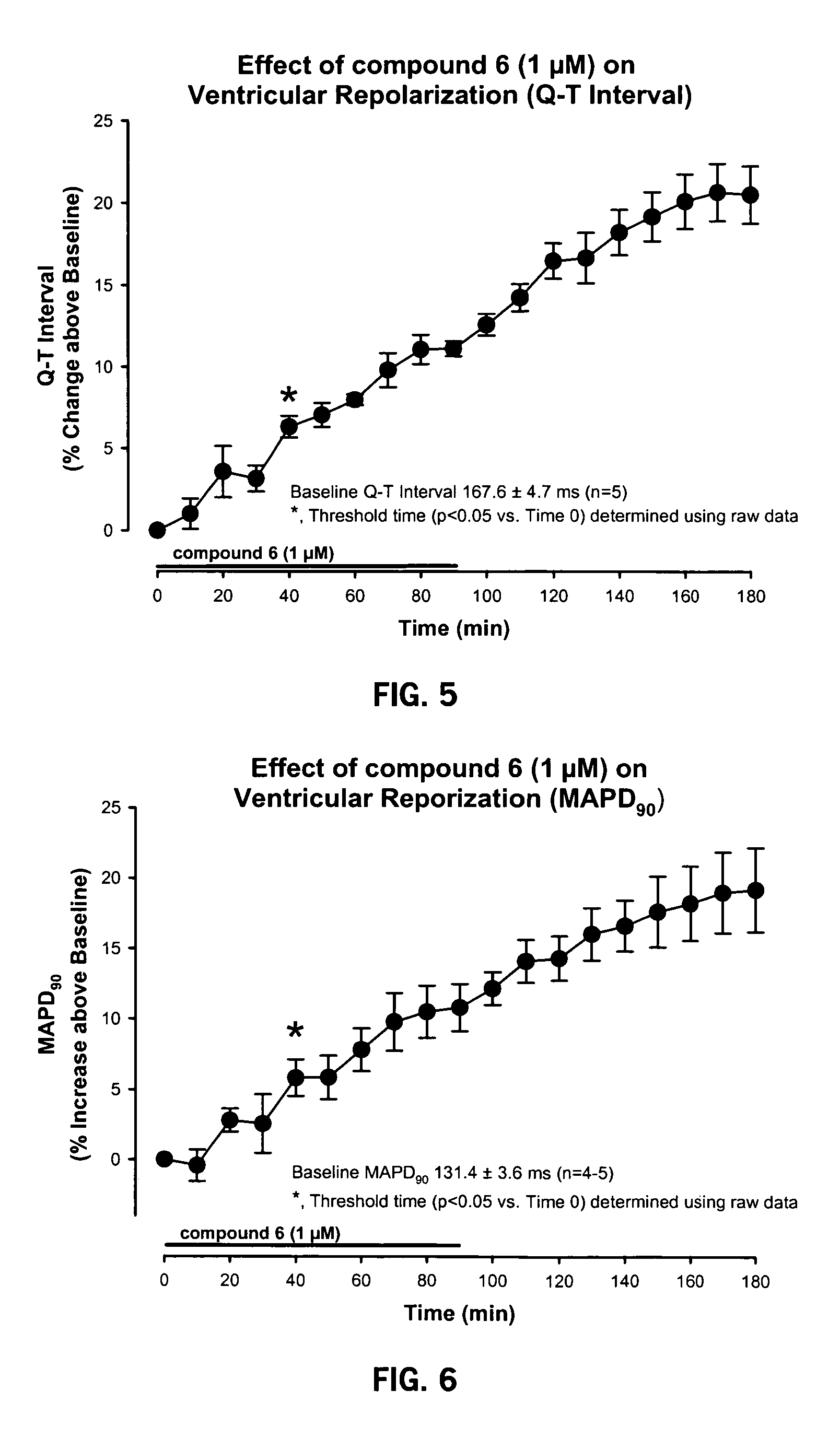Novel compounds for treatment of cardiac arrhythmia and methods of use
a technology of arrhythmia and compound, applied in the field of treatment of cardiac arrhythmia, can solve the problems of poor prognosis, increased risk of sudden death for patients with ventricular arrhythmias and ischemic cardiomyopathy, and poor survival rate, and achieve the effects of reducing the number of side effects, effective management, and good clinical
- Summary
- Abstract
- Description
- Claims
- Application Information
AI Technical Summary
Benefits of technology
Problems solved by technology
Method used
Image
Examples
example 1
Electrophysiological Effects of Compound 6
[0094] The model used to test the electrophysiological properties of Compound 6 utilized atrial-paced (cycle length=300 ms) guinea pig isolated hearts perfused with Krebs-Henseleit solution at 36° C. The following recordings were made:
[0095] Electrophysiological Recordings: atrial and His-bundle electrograms.
[0096] EP Measurements: SA, AH, HV, QRS and QT intervals.
[0097] Compound 6 was given via.infusion pump into perfusate line. Time-dependent EP effects were measured at 1 μM Compound 6. Compound 6l was infused for 90 minutes, then washed for 90 minutes. EP measurements were made Q 10 minutes. Data was analyzed by 1 way repeated measures ANOVA followed by SNK testing for multiple comparisons.
[0098] The results are presented in FIGS. 1-6.
example 2
Electrophysiological Effects of Compound 7
[0099] The model used to test the electrophysiological properties of Compound 7 utilized atrial-paced (cycle length=300 ms) guinea pig isolated hearts perfused with Krebs-Henseleit solution at 36° C. The following recordings were made:
[0100] Electrophysiological Recordings: atrial and His-bundle electrograms.
[0101] EP Measurements: SA, AH, HV, QRS and QT intervals.
[0102] Compound 7 was given via infusion pump into perfusate line. Time-dependent EP effects were measured at 1 μM Compound 7. Compound 7 was infused for 90 minutes, then washed for 90 minutes. EP measurements were made Q 10 minutes. Data was analyzed by 1 way repeated measures ANOVA followed by SNK testing for multiple comparisons.
[0103] The results are presented in FIGS. 7-12.
example 3
Synthesis of Compounds
[0104] The compounds of the subject invention can be readily made, or isolated, by a person skilled in the art having the benefit of the current disclosure as well as, for example, the disclosures in U.S. Pat. Nos. 6,710,070; 6,683,195; 6,372,783; 6,362,223; 6,316,487; 6,130,240; 5,849,788; 5,440,054; and 5,364,880. Schemes 2 and 3 provide synthesis procedures for making compounds 6 and 7 (examples where the ester moiety is (S)-2-butyl).
[0105] Specific reaction conditions can be readily determined by chemists skilled in the art having the current disclosure. In addition, a reasonably skilled chemist will recognize that the same synthetic scheme can be applied to make the compounds of the subject invention.
Scheme 2: (a) benzyl bromde / triethylamine (b) Tosyl chloride / triethylamine
Scheme 3: (a) compound 12 / KHCO3 / toluene / water (b) 1-chlorethyl chloroformate / methanol (c) H2SO4
PUM
| Property | Measurement | Unit |
|---|---|---|
| enantiomeric excess | aaaaa | aaaaa |
| enantiomeric excess | aaaaa | aaaaa |
| enantiomeric excess | aaaaa | aaaaa |
Abstract
Description
Claims
Application Information
 Login to View More
Login to View More - R&D
- Intellectual Property
- Life Sciences
- Materials
- Tech Scout
- Unparalleled Data Quality
- Higher Quality Content
- 60% Fewer Hallucinations
Browse by: Latest US Patents, China's latest patents, Technical Efficacy Thesaurus, Application Domain, Technology Topic, Popular Technical Reports.
© 2025 PatSnap. All rights reserved.Legal|Privacy policy|Modern Slavery Act Transparency Statement|Sitemap|About US| Contact US: help@patsnap.com



